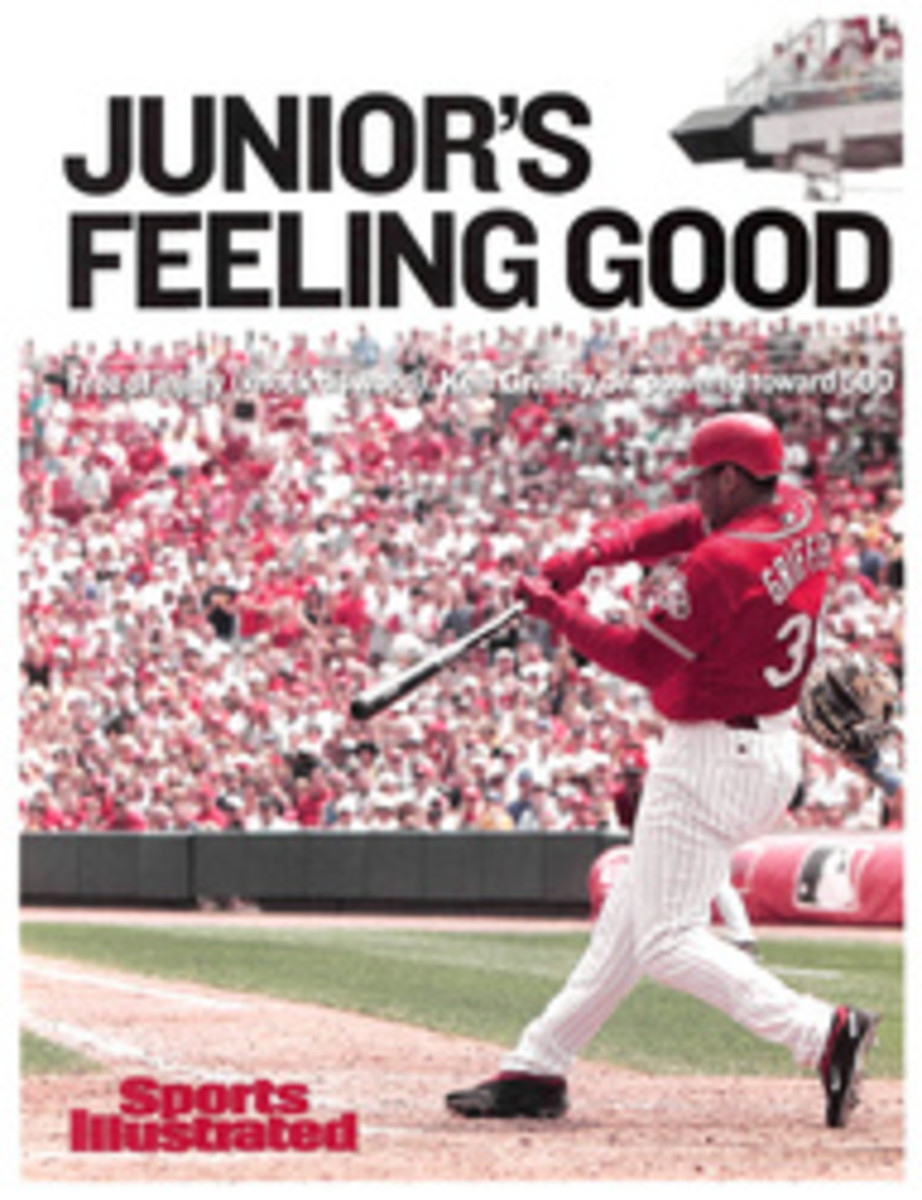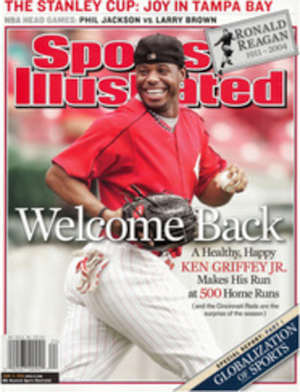
Crown Jewel For thrills, great barbecue and the chance to see future major leaguers, no event tops the College World Series in Omaha
A lifetime ago Steve Arlin was a 19-year-old righthander with a
hopping fastball and a 12-to-6 curve. He and his Ohio State
Buckeyes came to the 1965 College World Series as "relative
unknowns," he says, but at Rosenblatt Stadium in Omaha, Arlin
turned in a pitching performance for the ages. In an elimination
game against Washington State, he threw shutout ball for 15
innings, striking out 20 batters and beating the Cougars 1-0.
Despite his efforts the Buckeyes came up short that year--but
they would win it all the following spring. In the 1966 CWS,
Arlin appeared in five of Ohio State's six games, allowing two
runs in 20 1/3 innings; he was one of two starting pitchers
(with Texas great Burt Hooton) named in 1996 to the alltime CWS
team. "Rosenblatt Stadium was an amazing place," Arlin recalls.
"It's up on a hill, and you would approach it by bus, and the
lights would be on for night games. It's the central viewpoint
for the whole city, and the crowds are amazing. The way college
baseball is supported in Omaha is as good as anything in the
pros."
For two weeks each June, eight teams arrive for the
double-elimination tournament, and Rosenblatt becomes, in the
words of former USC coach Rod Dedeaux, who won a record 11 CWS
titles, "the cradle of college baseball." Since 1950, when Omaha
assumed control of the tournament--it previously had been held in
Kalamazoo, Mich. ('47, '48), and Wichita, Kans. ('49)--the town
and the game have fused, each sustaining the other. "We found an
unwanted baby on the side of the road, and we nurtured it," says
Jack Diesing Jr., president of CWS of Omaha, Inc., the nonprofit
group responsible for staging the tournament. "We've watched it
develop into the spectacle it is now. The kids play for the love
of the game, not for money, and fans love them for that. There's
a good, wholesome atmosphere and a down-to-earth work ethic,
quite illustrative of Midwestern culture."
Wholesome, for sure. No beer is sold at Rosenblatt, but fans can
buy hot dogs and bratwursts, pulled-pork sandwiches and Omaha
Steaks burgers. So ubiquitous is the grilling, inside and outside
the ballpark, that a catchphrase has evolved to describe a ball
club knocked out after a pair of losses: two and barbecue. The
crowds, which continue to arrive in droves (260,091 fans last
year, the most in the event's history), possess a heartland
homeyness, always enthusiastic and upbeat. "It was such a neat
place to be, I just got hooked," says Ann Walters, 80, a retired
schoolteacher from Council Bluffs, Iowa, just across the Missouri
River from Omaha, who estimates that she has missed just six CWS
games in the last 54 years.
"The world series is synonymous with Omaha," says Jack Payne, the
P.A. announcer for the event from 1964 to 2000. "The hospitality,
the grassroots interest, the civic pride--the guy on the street
has taken to it." Upon arriving in Omaha, each of the
participating teams is matched with a local service
club--Kiwanis, Rotary and their ilk--and treated to trips,
cookouts and parties throughout the series. The CWS also gives
much back. According to a study by Ernest Goss, an economics
professor at Creighton, the tournament's host school, the College
World Series added $33.8 million to the local economy in 2003,
sustaining the equivalent of 641 full-time jobs. It is one of
Nebraska's biggest tourist events; Goss estimates half of last
year's attendees came from out of state.
The CWS also showcases elite competition. Ninety-five current
major leaguers have played in Omaha, including the Giants' Barry
Bonds (Arizona State, '83 and '84) and the Astros' Roger Clemens
(Texas, '82 and '83). "It was the excitement of it, the
uncertainty of Who are we playing tomorrow?" says Dedeaux, a spry
90, who retired in 1986 after 45 years at the Trojans' helm.
"There was never a day's rest."
The World Series was the brainchild of college coaches following
World War II. Its creation was spearheaded by Cal's Clint Evans,
whose Golden Bears won the inaugural title. "College baseball at
that time was widespread and organized, but it just wasn't
generating the attention of football or basketball," says W.C.
Madden, co-author of The College World Series: A Baseball
History, 1947-2003. "The coaches wanted to change that. They
wanted a championship of their own." The CWS's history is deep in
Americana. Yale, captained by first baseman George H.W. Bush,
finished second in the first two series. "We took an overnight
train from Grand Central to Kalamazoo," says Jim Duffus, an Eli
starting pitcher. "Poppy Bush ran the best gin-rummy game on the
train, and when we arrived, there was a big banner hung over Main
Street announcing the series."
Duffus, 77, a retired banker and insurance man in Pittsford,
N.Y., relishes recounting the bizarre finish of Yale's opening
game of the '48 series, against USC: The Eli, trailing 3-1 in the
bottom of the ninth, loaded the bases with nobody out. Pinch
hitter Jerry Breen--"who subsequently went into the priesthood,
probably because of this," Duffus says--smacked a comebacker to
the mound, but Trojans pitcher Wally Hood made a lucky stab and
fired home to start a game-ending 1-2-3-5 triple play, leaving
Poppy Bush in the on-deck circle.
"The most exciting play in the history of collegiate baseball,"
says Dedeaux. "When Bush was vice president, there was an article
about that play, and he sent it to me, along with a letter,
saying that 36 years later he was still smarting."
The CWS can supply as much drama as its big league counterpart,
from USC's amazing comeback in '73--trailing Minnesota and
pitcher Dave Winfield 7-0 in the bottom of the ninth, the Trojans
rallied for eight runs and the title--to LSU second baseman
Warren Morris's bottom-of-the-ninth, series-winning home run
against Miami in '96. The participants, like Arlin, tend to find
themselves stamped for life. After an undistinguished six-year
big league career, mostly with the Padres, Arlin became an
endodontist in San Diego, where he practiced until retiring a
year ago. A few years back he received a phone call from a man
who identified himself as a member of the '66 USC team that Arlin
had beaten twice en route to the championship. "He was giving me
all kinds of grief about how they shouldn't have lost to us, on
and on," Arlin says. "I wasn't sure how much was tongue in cheek
and how much was serious."
The two weeks in Omaha are as serious, yet as fun, as baseball
gets. Filled with fervent fans and Kiwanis parties, tense games
and camaraderie, the CWS is the pinnacle of many careers. It's
quite a fortnight--even if all you do is two and barbecue.
This is the 47th in SI's 50th anniversary series on the 50
states. Next week: Oregon
COLOR PHOTO: DAVE WEAVER/AP HUSKERS DO Celebrations abound when Nebraska qualifies, as it did in 2002.
COLOR PHOTO: PHOTOGRAPH BY DAMIAN STROHMEYER PLATE COVERAGE Rice's Chris Kolkhorst was out at home against Stanford last year, but the Owls beat the Cardinal for the title.
B/W PHOTO: ARIZONA STATE UNIVERSITY SPORTS INFO/AP MAJOR TALENT College World Series alums include (from left) Bonds ('83, '84, Arizona State), Nomar Garciaparra ('94, Georgia Tech) and Clemens ('82, '83, Texas).
COLOR PHOTO: CHUCK SOLOMON MAJOR TALENT College World Series alums include (from left) Bonds ('83, '84, Arizona State), Nomar Garciaparra ('94, Georgia Tech) and Clemens ('82, '83, Texas).
B/W PHOTO: TRAVIS SPRADLING MAJOR TALENT College World Series alums include (from left) Bonds ('83, '84, Arizona State), Nomar Garciaparra ('94, Georgia Tech) and Clemens ('82, '83, Texas).
"The crowds are amazing," says Arlin, a former big leaguer. "The
way college baseball is supported in Omaha is as good as
anything in the pros."
For more about sports in Nebraska and the other 49 states, go to
si.com/50.

